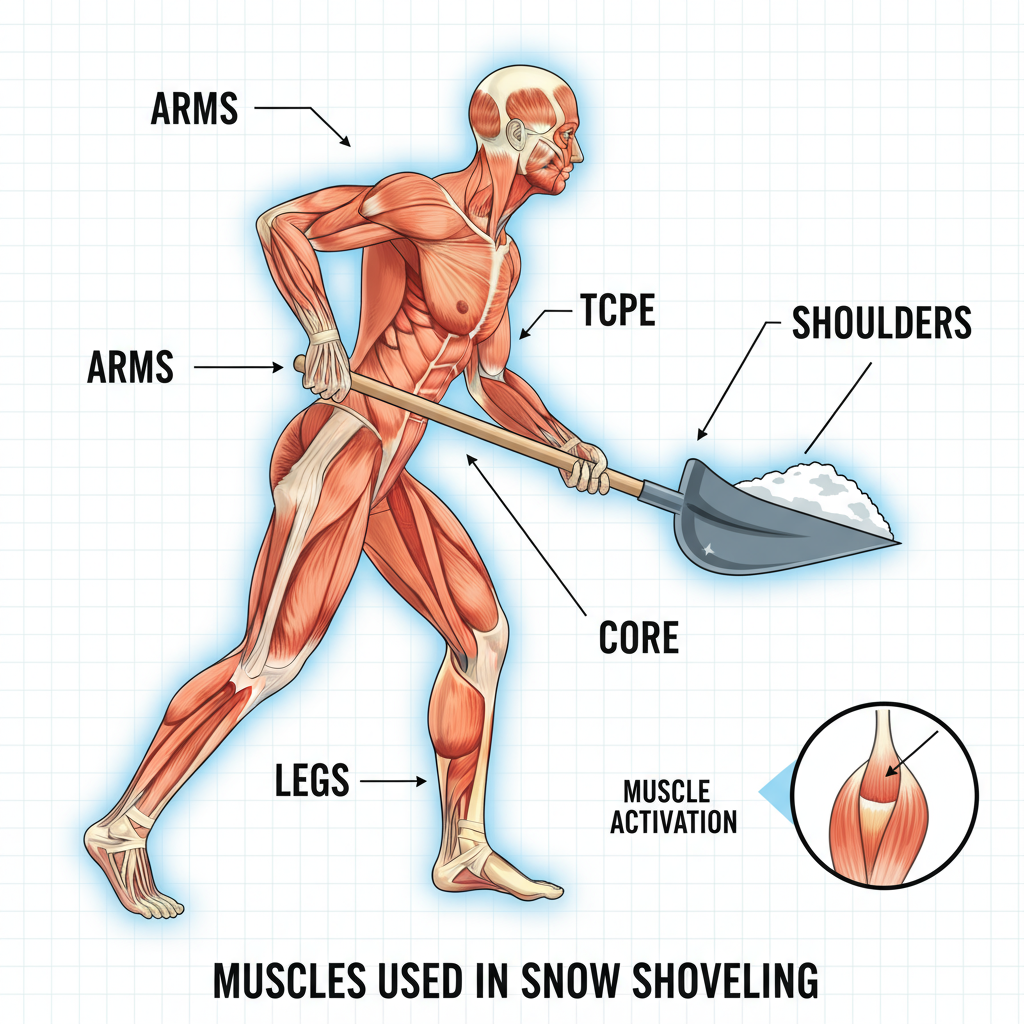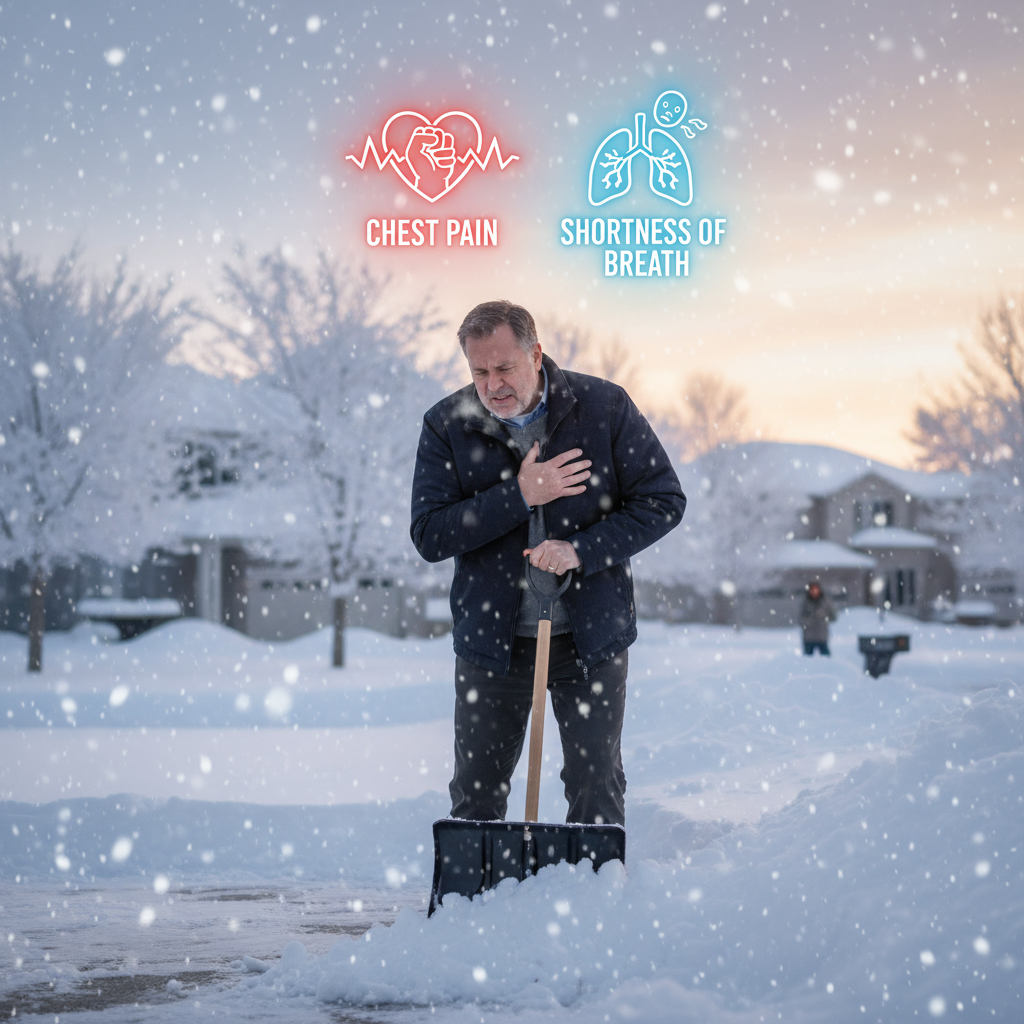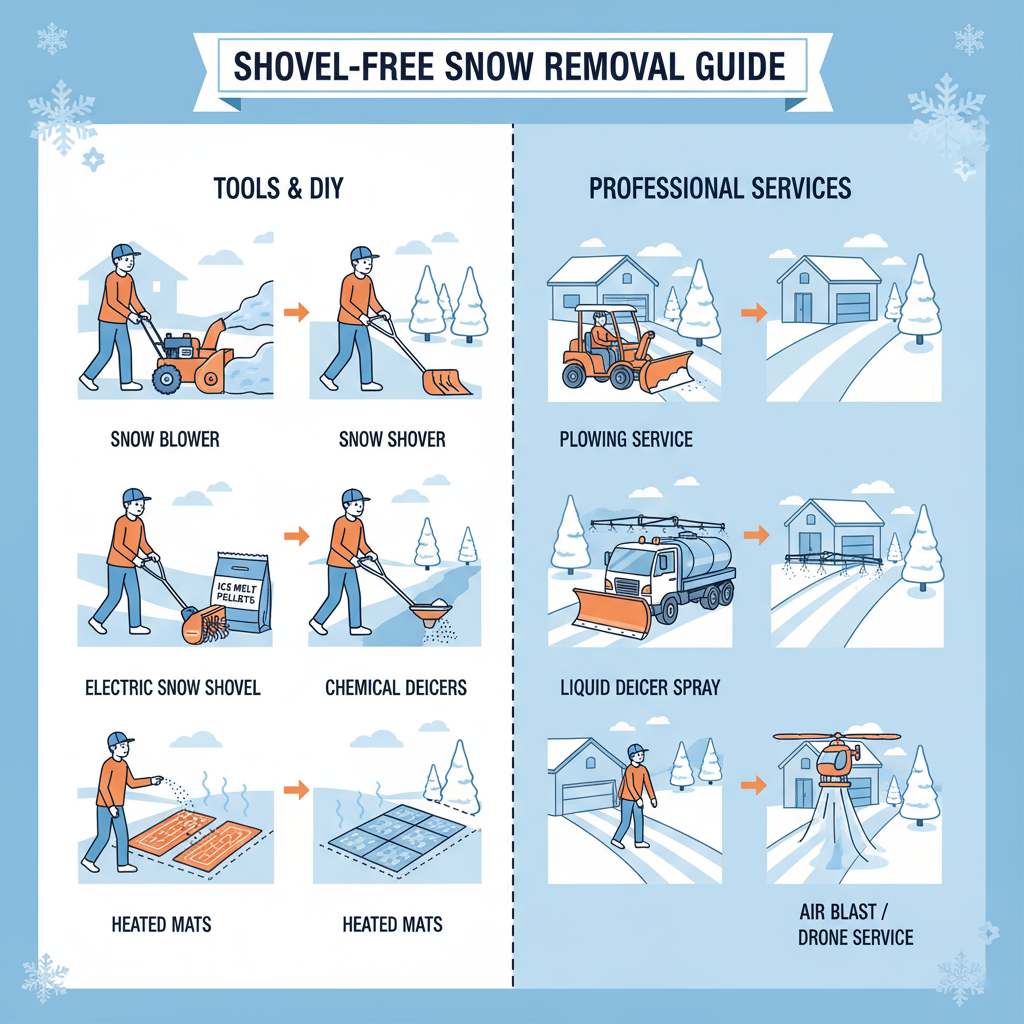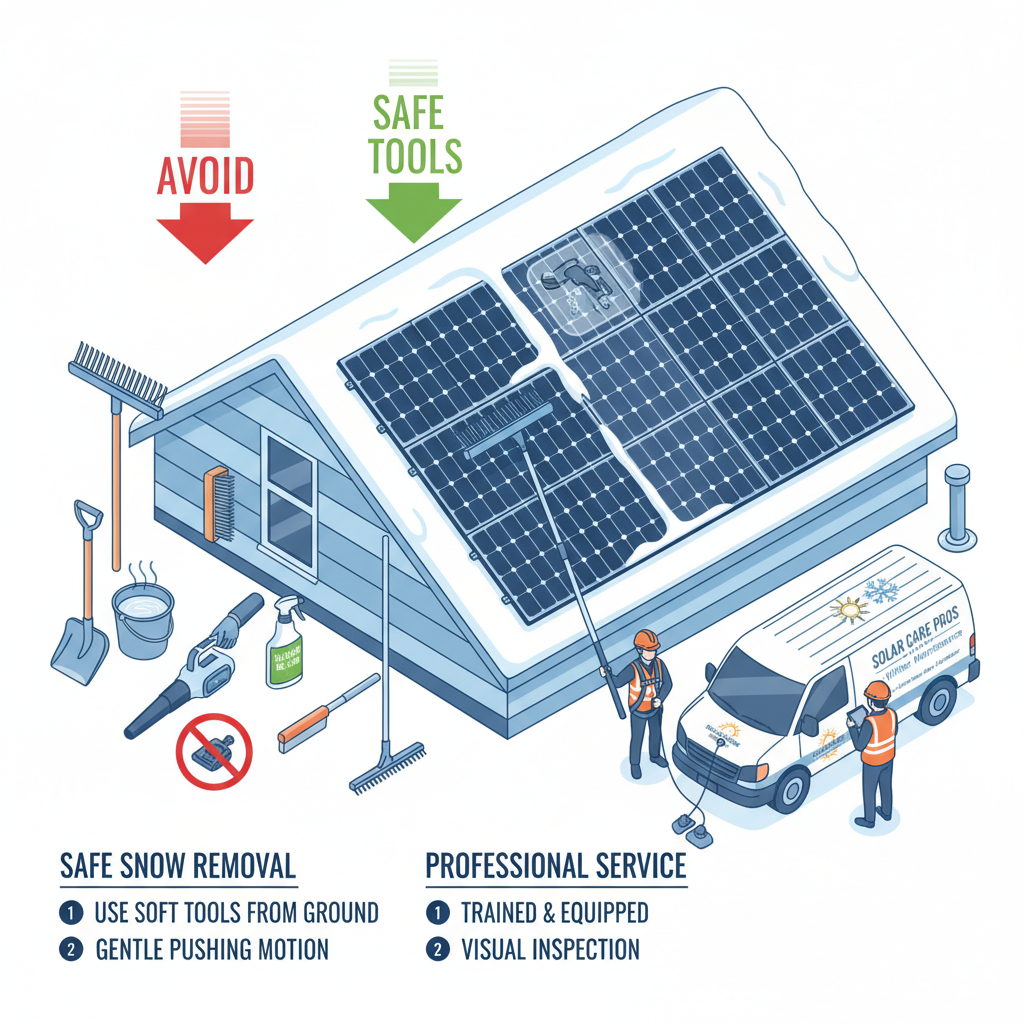TL;DR
- Shoveling snow burns 360-504 calories per hour for moderate effort, comparable to vigorous exercise.
- It engages full-body muscles but poses heart attack risks, especially for those over 45 or with health conditions.
- Use proper form, warm up, and consider hiring professionals for safety and convenience.
- Professional snow removal costs $30-$70 per visit or $300-$1,000 seasonally.
Snow shoveling tips: the winter workout you didn’t ask for. Winter snows may look serene when you’re watching flakes drift past your window, but when the driveway disappears under a heavy, white blanket, the picture changes. Shoveling is part workout, part winter survival skill, and part hazard. If you have ever asked “how many calories does shoveling snow burn?” or wondered why the chore can feel so exhausting, this article breaks down the numbers, the muscles used and the hidden risks. We’ll also cover why snow shoveling can trigger heart attacks, who should think twice before grabbing a shovel, what to pay if you hire help and how to clear snow safely and efficiently.
Calories and Exercise Benefits of Shoveling
Why shoveling counts as exercise
Snow removal isn’t just tedious-it qualifies as a moderate‑to‑vigorous workout. The lifting, pushing and tossing motions recruit your legs, core and upper body muscles. An hour of steady shoveling raises your heart rate enough to count as aerobic exercise. Researchers have compared the physical demands of shoveling to those of a treadmill stress test-participants in one study reached more than 85 % of their predicted maximum heart rate after just two minutes of shoveling[1]. That intensity means you are burning calories and building strength, but it also explains why the task can be dangerous for some people.
Calories burned shoveling snow
How much energy you expend depends on your weight, how vigorously you work and the depth and density of the snow. Harvard Health’s compendium of calories burned lists shoveling snow by hand as burning about 180 calories in 30 minutes for a 125‑pound person, 216 calories for a 155‑pound person and 252 calories for a 185‑pound person[2]. Double those numbers for an hour and the range becomes roughly 360-504 calories per hour for moderate effort.
Metabolic equivalent (MET) values provide another way to estimate energy cost. The Compendium of Physical Activities assigns snow shoveling a MET value of 6.0 for moderate effort and 7.5 for vigorous effort[3]. Applying the standard calorie formula (MET × 3.5 × weight in kg × minutes / 200) yields the following estimates:
| Weight (lb) | Shoveling - moderate (6.0 METs) | Shoveling - vigorous (7.5 METs) | Cross‑country skiing (8.0 METs) |
|---|---|---|---|
| 125 lb | ≈ 357 calories/hour | ≈ 446 calories/hour | ≈ 476 calories/hour |
| 150 lb | ≈ 428 calories/hour | ≈ 536 calories/hour | ≈ 572 calories/hour |
| 155 lb | ≈ 443 calories/hour | ≈ 554 calories/hour | ≈ 591 calories/hour |
| 180 lb | ≈ 516 calories/hour | ≈ 645 calories/hour | ≈ 686 calories/hour |
| 185 lb | ≈ 529 calories/hour | ≈ 661 calories/hour | ≈ 705 calories/hour |
| 200 lb | ≈ 573 calories/hour | ≈ 716 calories/hour | ≈ 762 calories/hour |
These numbers align with other estimates. The CDC notes that an hour of shoveling snow can burn around 532 calories-similar to vigorous weightlifting-and fitness websites report values near 536 calories per hour for a 150‑pound person and over 600 calories per hour for a 180‑pound person[4]. A lighter person working slowly may burn closer to 350 calories per hour, while a heavier person moving heavy, wet snow quickly can exceed 650 calories.
Muscles worked during snow shoveling
Snow shoveling is a full‑body workout. The muscles that work hardest are the ones that lift, push and stabilize the load:
 Figure 1: Muscles engaged during snow shoveling
Figure 1: Muscles engaged during snow shoveling
- Legs and hips - Your quadriceps, hamstrings and gluteus maximus provide the power to squat down, lift and step while carrying snow. Keeping your knees flexed and lifting with your legs reduces strain on your back[5]. The hip and thigh muscles provide stability as you push or throw snow[6].
- Core (abs and lower back) - Strong abdominal and erector spinae muscles stabilize the spine and protect against injury[5]. Weak core muscles are often behind the lower‑back pain people feel after shoveling[7].
- Shoulders and arms - The deltoid muscles hold the shoulder joint together, and the biceps and triceps bend and straighten your elbows when lifting and tossing snow[8]. The latissimus dorsi in your back stabilizes the shoulder blades during repetitive scooping motions[9].
Because shoveling often involves isometric arm work and lifting heavy loads, your heart must pump extra hard to deliver oxygen to both upper and lower body muscles[10]. In other words, it’s a strength session and a cardio interval workout rolled into one. Physical therapists recommend warming up before starting, using an ergonomic shovel with a curved shaft to reduce bending, and taking breaks to prevent fatigue[11][12].
Comparing shoveling with other winter activities
If shoveling feels like a workout, that’s because it is comparable to many winter sports. According to Harvard Health’s calorie table, cross‑country skiing burns roughly 396 calories in 30 minutes for a 125‑pound person and about 493 calories for a 155‑pound person[13]; that translates to 792-986 calories per hour. Snowshoeing burns about 240-336 calories in 30 minutes, or 480-672 calories per hour[14]. Downhill skiing, a mix of gliding and brief bursts, burns about 360-420 calories per hour for a 155‑pound person[15]. Hiking or brisk walking burns about 245-285 calories in 30 minutes, or 500-570 calories per hour[16]. Even chopping wood (another winter chore) burns 400-500 calories per hour[17].
In short, snow shoveling sits between a moderate hike and a vigorous skiing session. It can torch calories quickly, but the benefits come with risks if you overexert yourself or ignore proper form.
Safety, Heart Attacks and Health Risks
Why snow shoveling can be dangerous
Medical experts have long warned that snow shoveling is associated with a surge in heart attacks. The American Heart Association (AHA) notes that the combination of arm‑dominated exertion, breath‑holding while lifting heavy loads, and cold‑induced blood‑vessel constriction creates a “perfect storm” for a cardiac event[10][18]. In cold weather, the body diverts blood from the limbs to preserve core temperature; working hard with reduced blood flow stresses the heart. Several studies offer sobering statistics:
- A Harvard Health review reports that about 100 people-mostly men-die during or shortly after shoveling snow each year in the United States[19]. An analysis of Canadian data showed that after an eight‑inch snowfall there was a 16 % increase in hospital admissions for heart attacks and a 34 % increase in deaths among men[20].
- The National Safety Council estimates that snow shoveling sends more than 11 000 people to U.S. emergency rooms annually and accounts for roughly 100 deaths each winter[21]. Common nonfatal injuries include soft‑tissue strains (particularly in the lower back), slips and falls and being hit by a shovel[22].
- New Jersey’s emergency management office notes that 1 647 cardiac‑related incidents were reported between 1990 and 2006, with men over 45 who lead sedentary lifestyles at greatest risk[23][24].
What makes shoveling so hazardous? Dr. Barry Franklin, a cardiovascular researcher cited by the AHA, explains that it involves four stressors: static exertion, arm work, the Valsalva maneuver (holding your breath while lifting), and cold air, all of which dramatically elevate heart rate and blood pressure[25]. For people with hidden heart disease, the sudden spike can trigger a heart attack or sudden cardiac arrest.
Who is at risk?
Age alone does not dictate risk, but cardiovascular health does. The AHA’s 2025 guidance urges adults over 45 to exercise caution, especially if they have known or suspected heart disease, high blood pressure, high cholesterol, diabetes, obesity, a history of smoking or a sedentary lifestyle[26]. The Providence Journal notes that more than 200 000 adults were treated for snow‑shoveling injuries between 1990 and 2006 and over 1 600 deaths were linked to the activity[27]. Some people in their 70s may be fit enough to shovel, while a sedentary 45‑year‑old with high blood pressure should avoid the chore.
If you belong to a high‑risk group-had bypass surgery or angioplasty, have angina or significant heart disease-the AHA says you should let someone else do the snow removal[28]. Even healthy individuals should avoid shoveling right after a heavy meal or while smoking, as digestion and nicotine both place extra stress on the heart[21].
Recognizing heart‑attack warning signs
Snow shoveling is often done alone, so knowing the signs of trouble can save a life. Warning signs of a heart attack include chest pain or pressure, light‑headedness, shortness of breath, heart palpitations and cold sweats[29]. Stop immediately if you feel any of these symptoms, call emergency services and, if possible, chew an aspirin while waiting for help.
 Figure 2: Recognizing heart attack symptoms while shoveling snow
Figure 2: Recognizing heart attack symptoms while shoveling snow
Safety tips for shoveling
Experts recommend treating snow shoveling like a workout. These tips can help you stay safe:
- Warm up and dress warmly. Spend five to ten minutes marching in place, stretching or doing gentle yoga before heading outside. Cold muscles are more prone to injury, and layered clothing keeps blood flowing to your limbs[30].
- Use the right tool. Choose a lightweight, curved‑shaft shovel so you don’t have to bend and twist as much[31]. Apply lubricant (such as cooking spray) to prevent snow from sticking[32].
- Push rather than lift. Whenever possible, push the snow aside instead of lifting and throwing it. If you must lift, keep your elbows close to your body, bend at the knees and use your legs and arms rather than twisting your back[5]. Pivot your feet to turn instead of twisting your torso[33].
- Take small loads and switch sides. Wet snow can weigh more than 20 pounds per cubic foot. Scoop smaller amounts to reduce strain and alternate which hand is on top of the handle to balance the workload[12].
- Pace yourself. Take frequent breaks-every 10-15 minutes-and drink water, even if you don’t feel thirsty. Dehydration can occur in cold weather[30]. Stop if you feel dizzy or overly short of breath.
- Avoid shoveling at peak risk times. Try not to shovel immediately after eating or first thing in the morning, when blood is more likely to clot. If there’s a lull in the storm, shovel periodically instead of waiting until the end; pushing a few inches of fresh snow is easier than moving a foot of compacted snow[34].
- Consider mechanical help. Snow blowers are not risk‑free, but research shows that using one keeps your heart rate around 120 beats per minute compared with around 170 beats per minute during heavy shoveling[10]. For large areas, a snow blower or plow significantly reduces effort.
If the risk factors are stacked against you, the safest option is to hire a neighbor or professional.
 Figure 3: Professional snow removal service clearing driveway safely
Figure 3: Professional snow removal service clearing driveway safely
Age and Physical Limits
Should older adults stop shoveling?
There is no universal age at which everyone must retire their shovel, but multiple medical groups draw a line around age 45-50. The American Heart Association’s spokesperson told the Providence Journal that adults over 45 should use caution and that anyone with heart disease, high blood pressure or high cholesterol should seriously consider hiring help[26]. Similarly, the National Safety Council advises that people over 40 or those who are relatively inactive be especially careful[21]. New Jersey’s emergency management office warns that men over 45 who are sedentary face the greatest risk of heart attack while shoveling[23].
Age interacts with fitness level and health. A 70‑year‑old who exercises regularly and has no cardiovascular disease may be safer shoveling than a sedentary 45‑year‑old with high blood pressure. Listen to your body and consult your doctor if you are unsure. Warning signs that you should stop include persistent chest discomfort, unusual shortness of breath, dizziness, a racing heart that doesn’t slow during breaks or joint pain that worsens as you work.
Alternatives for seniors
If shoveling is off the table, you still have options:
- Invest in a snow blower or electric thrower. These machines do most of the heavy lifting. Ensure you still wear traction footwear and keep hands away from moving parts.
- Hire local help. Many neighborhoods have teenagers or contractors who will clear a driveway for a fee (see pricing section below).
- Coordinate with neighbors. Some communities organize snow‑removal rotas; younger or fitter neighbors clear the path for older residents in exchange for baked goods or a small payment.
- Prepare your property. Apply de‑icing products before a storm to reduce accumulation and make lighter shoveling possible. Keep a bag of sand or kitty litter to improve traction on icy surfaces.
Pricing and Hiring Help
How much should you charge (or pay) for snow shoveling?
Snow‑removal pricing varies by location, driveway size, snow depth and whether you pay per visit or sign a seasonal contract. HomeGuide’s 2024 cost guide states that snow plowing contractors charge $25-$75 per hour for shoveling, blowing or plowing, with per‑season contracts ranging from $200-$600[35]. Most driveway and sidewalk jobs cost $30-$70 per visit[35]. The guide notes that contractors often charge by the hour rather than by square footage and that raking snow off a roof can cost $200-$500[36]. A seasonal contract covering multiple storms averages $200-$600, with prices rising in regions with heavy snowfall[37].
LawnStarter’s 2025 pricing analysis reports that snow removal typically costs $45-$160 per visit or $300-$1 000 for a seasonal contract, with hourly rates of $25-$75 and minimum fees of $25-$100[38]. Costs per inch of snow range from $10-$25 for the first six inches and $4-$9 for each additional inch[39]. The article provides location‑specific estimates-$50-$300 per visit in Boston, $100-$150 in Hartford and $45-$80 in Omaha[40]-and notes that shoveling is often the most expensive method because it is slow and labor‑intensive[41].
When setting a price to offer your services, consider:
- Driveway size and complexity. Large driveways, steep slopes or multiple walkways take more time.
- Snow depth and density. Heavy, wet snow requires more labor than a light powder.
- Local going rates. Check community forums or ask neighbors what they pay. Rates in major cities with frequent snow are higher than in suburbs with light snowfall[40].
- Equipment costs. If you provide a snow blower, factor in fuel, maintenance and transportation.
- Insurance and licensing. Professional contractors often carry liability insurance; those costs are embedded in their rates.
For homeowners, getting multiple estimates before a storm, asking about contract limits (e.g., maximum number of visits) and clarifying whether salt or de‑icing services are included can prevent surprises. Signing a seasonal contract may save money compared with paying per storm if you live in a snowy region.
Timing and Practical Tips
When is the best time to shovel?
Shoveling strategy matters almost as much as muscle power. Better Homes & Gardens advises removing snow after it has stopped falling but before it’s been walked or driven on, because fresh snow is easier to remove and compacted snow quickly turns to ice[42]. The article warns never to let snow sit overnight if you can help it-temperatures often drop and harden the snow by morning[43]. It recommends clearing 2-4 inches at a time during a heavy storm and waiting until the snowfall has ended if only a dusting is expected[44]. If temperatures are extremely cold, waiting until midday when the sun warms the pavement can soften the snow and make it easier to push[45]. Conversely, if temperatures are near freezing, shovel promptly because wet snow will compact and freeze into a heavy slab[46].
Other practical tips include:
- Prepare your equipment ahead of time. Keep shovels, ice scrapers and salt where they are easy to reach. Lubricate shovel blades with wax or spray so snow slides off[32].
- Plan your path. Start near the house or garage and work outward, throwing snow in the direction you won’t need to clear later. Avoid piling snow where it will block drainage or create ice dams[47].
- Clear before traffic. Shovel walkways and steps before people or vehicles compact the snow. For driveways, shovel a lane wide enough for tires first so vehicles do not pack down the snow.
- Layer up and stay visible. Wear traction boots, a hat, gloves and a bright jacket. In low light, add reflective gear. Cold air constricts blood vessels and raises blood pressure[48], so protect your face and hands.
- Use de‑icer sparingly. Chemical salts can damage concrete and harm plants. Physical snow removal often reduces the need for chemicals[49].
By shoveling strategically and not waiting until the storm is over, you’ll move lighter, fluffier snow in shorter sessions instead of struggling with an icy, compacted block.
Conclusion: A Balancing Act of Fitness and Safety
Shoveling snow can be a free winter workout that burns hundreds of calories, builds strength and works nearly every major muscle group. Moderate shoveling may burn 400-500 calories per hour for an average‑sized person, while vigorous shoveling pushes the tally past 600 calories-comparable to jogging or cross‑country skiing. The movements engage your legs, glutes, core, back and arms and, if done with proper form, can improve functional strength. For many people, it’s a bonus that you cannot get at the gym: a workout that leaves your driveway clear and your neighbors grateful.
But the benefits come with real risks. Cold air, sudden exertion and heavy lifting make shoveling one of the only household chores linked to spikes in heart attacks. On average around 100 people die each winter after shoveling, and thousands more suffer strains, falls and back injuries[21][19]. People over 45 or with cardiovascular conditions should approach snow removal with caution or delegate the task[26]. For those with underlying heart disease, the safest option is to hire help or use a snow blower.
Understanding the calorie burn, the muscle groups involved and the health risks allows you to approach snow shoveling like any other strenuous activity. Warm up, use the right equipment, pace yourself and listen to your body. If you’re unsure or unfit, there’s no shame in outsourcing the job; seasonal snow‑removal contracts cost $300-$1 000[38], far less than a hospital bill. When done thoughtfully and safely, snow shoveling can be both a practical necessity and an invigorating winter workout.
References
[1] [10] Snow shoveling, cold temperatures combine for perfect storm of heart health hazards | American Heart Association
[2] [13] [14] [15] Calories burned in 30 minutes of leisure and routine activities - Harvard Health
[3] Lawn & Garden - Compendium of Physical Activities
https://pacompendium.com/lawn-garden/
[4] Gardening Calories Burned
https://fitliferegime.com/gardening-calories-burned/
[5] [30] [33] When Shoveling Snow, Protect Your Health - Connecticut Orthopaedics
[6] [7] [8] [9] Muscles Utilized When Shovelling - Shovel Zone
https://shovelzone.ca/what-muscles-does-shoveling-utilize/
[11] Shoveling Snow with Proper Body Mechanics - Move Better Physical Therapy
https://www.movebettertherapy.com/shoveling-snow-with-proper-body-mechanics/
[12] Protecting Your Back and Shoulders While Snow Shoveling | Orthopedists
https://www.oamichigan.com/protecting-back-shoulders-snow-shoveling/
[16] METs.pdf
https://media.hypersites.com/clients/1235/filemanager/MHC/METs.pdf
[17] Winter workouts that burn a lot of calories
https://www.accuweather.com/en/sports/winter-workouts-that-burn-a-lot-of-calories/647133
[18] [28] A snowstorm’s a-brewing - be careful out there to stay heart-healthy | American Heart Association
https://newsroom.heart.org/news/a-snowstorms-a-brewing-be-careful-out-there-to-stay-heart-healthy
[19] [20] Can shoveling snow put your heart at risk? - Harvard Health
https://www.health.harvard.edu/blog/can-shoveling-snow-put-your-heart-at-risk-2017120612887
[21] Snow Shovel Safety - National Safety Council
https://www.nsc.org/community-safety/safety-topics/seasonal-safety/winter-safety/snow-shoveling
[22] [23] [24] [25] [48] Thousands of people are injured annually shoveling snow | NJ Spotlight News
https://www.njspotlightnews.org/2024/02/more-than-11k-people-injured-annually-shoveling-snow/
[26] [27] [29] When should you stop shoveling snow yourself? How old is too old
https://eu.providencejournal.com/story/weather/2025/02/08/ri-shoveling-snow/78342289007/
[31] [32] Snow Shovelling - REP Physio
https://repphysio.ca/exercise/snow-shovelling/
[34] [42] [43] [44] [45] [46] [47] [49] This Is the Best Time to Remove Snow
https://www.bhg.com/when-to-remove-snow-11682216
[35] [36] [37] 2025 Snow Removal Prices | Plowing Rates, Services & Calculator
https://homeguide.com/costs/snow-removal-cost
[38] [39] [40] [41] How Much Does Snow Removal Cost in 2025?



